Ferrari has taken the lead in the 2011 Formula One season already by being the first team to launch its new car. Ferrari have labelled this one the F150; no, it’s not an old Ford pickup, but a 21st century racing machine.
Out go the blown diffuser and “F-duct” rear wings and back comes KERS along with the addition of adjustable rear wings. A ban on engine development means the 2.4 litre V8 fitted to this car is the same unit used in last year’s F10.
More photos and press material from Ferrari, including a video walk around of the F150, can be seen after the break. Remember, too, 2000px wallpaper-friendly images can be accesed by clicking on any of the pics.
Ferrari F150 Technical Specifications
Chassis
- Carbon-fibre and honeycomb composite structure
- Ferrari longitudinal gearbox
- Limited-slip differential
- Semiautomatic sequential electronically controlled gearbox – quick shift
- Number of gears: 7 +Reverse
- Brembo ventilated carbon-fibre disc brakes
- Independent suspension, push-rod activated torsion springs front and rear
- Weight with water, lubricant and driver: 640 kg
- BBS Wheels (front and rear): 13â€
Engine
- Type: 056
- Number of cylinders: 8
- Cylinder block in sand cast aluminium V 90°
- Number of valves: 32
- Pneumatic distribution
- Total displacement: 2398 cm3
- Piston bore: 98 mm
- Weight > 95 kg
- Electronic injection and ignition
- Fuel: Shell V-Power
- Lubricant: Shell Helix Ultra
F150: description
The F150 is the fifty-seventh single-seater built by Ferrari specifically to compete in the Formula 1 World Championship. The Maranello marque chose the name as a tribute and celebration of the one hundred and fiftieth anniversary of the Unification of Italy.
The project, which goes by the internal code name of 662, represents the Scuderia’s interpretation of the technical and sporting regulations that apply this year. Various factors influenced the design of the car, especially on the aerodynamic front, to the extent that the F150 can be seen as severing ties with the recent past. The innovative aspects are in part dictated by changes to the regulations and partly down to original thinking from our designers. As far as the rule changes from 2010 are concerned, the double diffuser and the blown rear wing are banned, as is the use of apertures in the front part of the floor, while the use of an hydraulically controlled adjustable rear wing has been introduced. After an unofficial agreement saw its use banned for 2010, KERS is back this year, thanks partly to the increase in the car’s minimum weight and stricter controls on weight distribution figures. The Scuderia has decided to incorporate this technology on the F150 and this has had a significant impact on the design, also taking into account that the dimensions of the fuel cell are very different to what they were in 2009. Also significant are changes dictated by the introduction of stricter safety requirements in terms of crash-tests, cockpit area protection and wheel-retaining cables for use in accidents.
At first glance, the front part of the F150 monocoque appears to be higher than that of the F10. The openings for the side air intakes are reduced in size, while the layout of the dynamic one above the driver’s head has been modified. The rear suspension features a new design, while that at the front has been modified, following changes to the front part of the chassis. The exhaust system layout is similar to that adopted for the second half of last season and the cooling system has had to take into account the return of KERS and the new air exit ducts. The braking system has been completely redesigned in collaboration with Brembo.
However, the aerodynamic package sported by the car at the presentation is very different to the one which will be seen for the first race in Bahrain: for the early stages of testing, the decision was taken to concentrate on development aspects linked to the mechanical components and on developing an understanding of the Pirelli tyres, while continuing to push on the development of aerodynamic performance in the wind tunnel. Indeed, the tyres will be another significant new element this season: after a thirteen year relationship with Bridgestone, this year it is Pirelli who take up the baton as sole supplier to Formula 1 for the next three years and thus provide the tyres for the cars from Maranello. Given that the teams have so far only managed two days of testing with the new tyres back in November, clearly the fifteen days of testing prior to the start of the season will be very important when it comes to adapting the handling of the car to the tyres.
As the freeze on engine performance development is still ongoing, there have been no actual modifications to the 056 engine, but that does not mean Ferrari’s engine specialists have been idle. Work has gone into improving reliability, working especially on the pneumatic front, as well as on reducing costs. Furthermore, the reintroduction of KERS has led to a substantial change in the architecture of the front end of the engine, with modifications to the drive shaft system of the KERS itself and the crankshaft and this has led to changes to the cooling and lubrication systems. The kinetic energy recovery system, designed by Ferrari, has been produced in conjunction with MTS and Magneti Marelli and was fine tuned based on experience acquired in 2009, with the aim of reducing its size and weight, while maintaining, in accordance with the regulations, the maximum useable power and its useage cycle over one lap. This is another area where great attention has been paid to cost reduction, both in terms of its development and the way it is run, so as to make the system equally viable for our customer teams, Sauber and Toro Rosso. The positioning of the KERS within the fuel cell was a further impetus to look at solutions aimed at reducing fuel consumption: in this area, the contribution from a key partner in the form of Shell was vital and will continue to be so throughout the season.
The number of testing days available to the teams remains the same, with 15 prior to the start of the season, therefore preparatory work on the test beds, prior to taking to the track has been ever more important, both on the chassis side and for areas such as the gearbox, engine and KERS.
As is always the case at Ferrari, great attention has been paid to the performance and optimisation of all materials used, in the design stages and when going through quality control, striving to maximise performance levels and reliability, while delivering the highest possible safety standards.
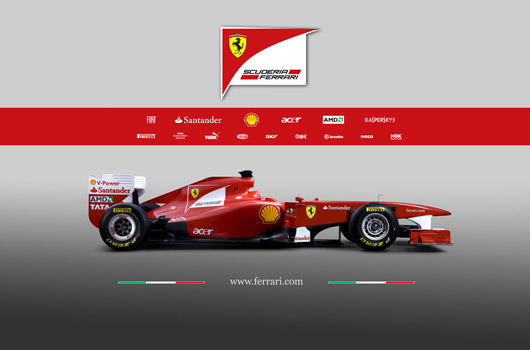
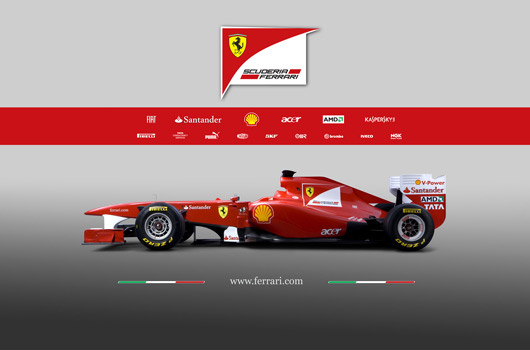
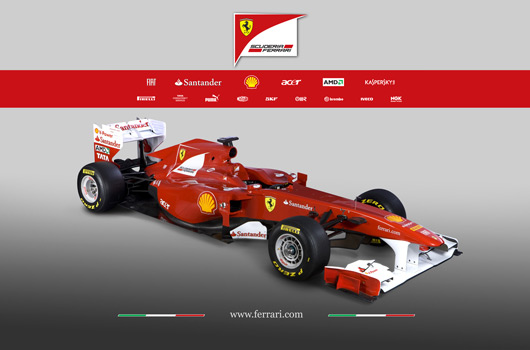
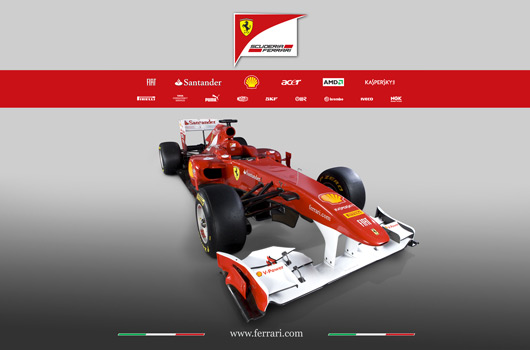
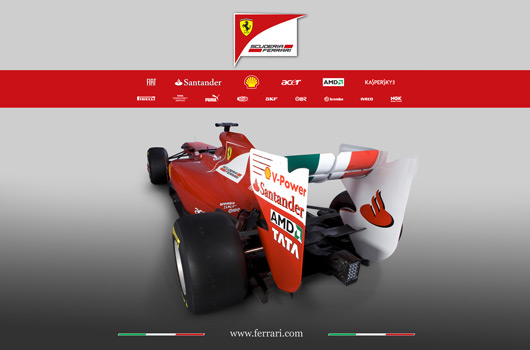
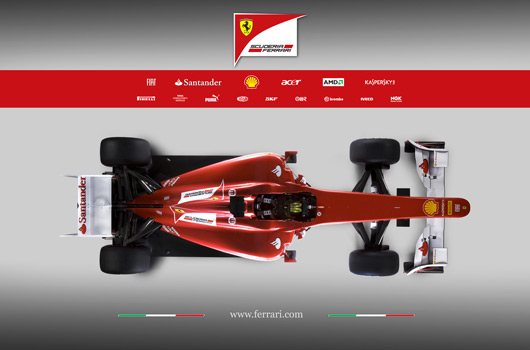
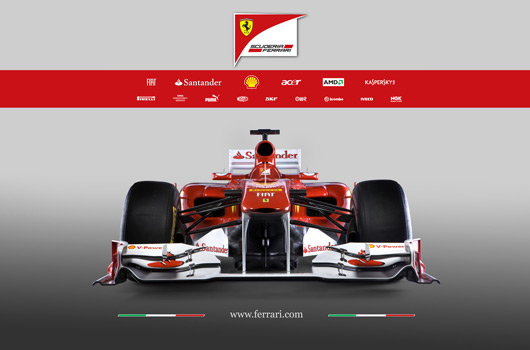
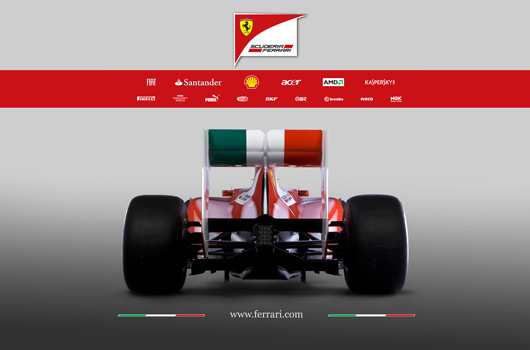
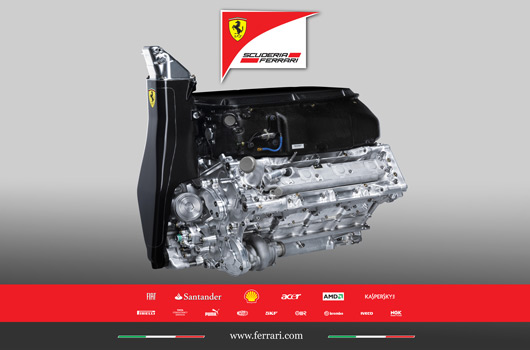
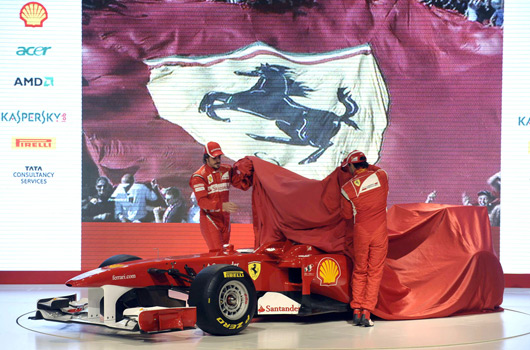
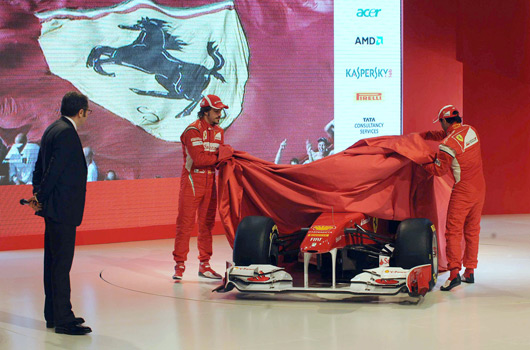
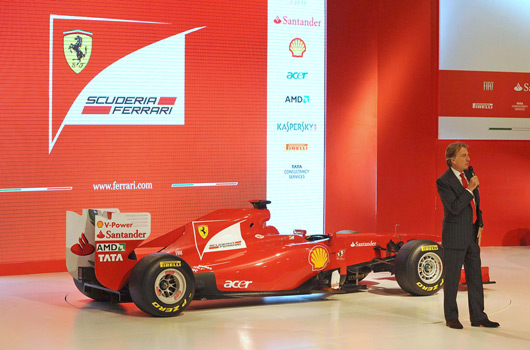
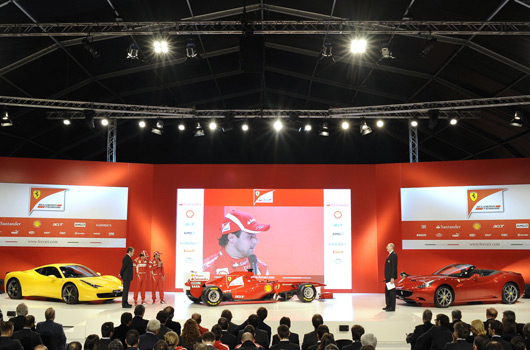
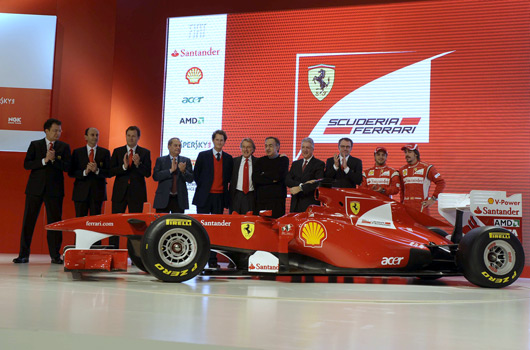
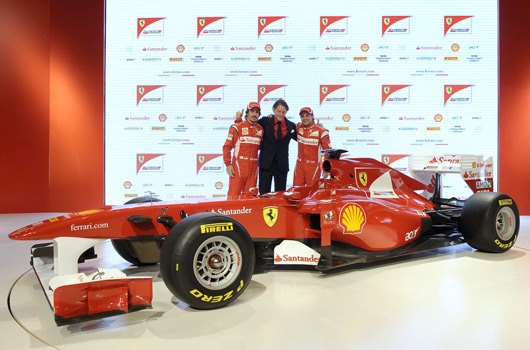
6 replies on “Ferrari unveils 2011 F1 car”
[…] has published plenty of video highlights from the launch of its 2011 Formula One car, the F150, to its media portal. To begin with you can see Team Principal, Stefano Domenicali, explain the […]
[…] Scuderia Ferrari Marlboro (F150) 5. Fernando Alonso (ESP) 6. Felipe Massa (BRA) […]
[…] late January, when Ferrari launched their 2011 F1 car, the name F150 immediately conjured up images of hillbillies chowing down some grits for breakfast […]
[…] Ferrari, Lamborghini is paying tribute to Italy’s 150th anniversary of unifcation. Not having their […]
[…] five images comparing the F2012 against last year’s F150 Italia. At first glance it’s really just that horrible nose on the F2012 that stands out, but spend […]
[…] has come up trumps with one of the coolest Lego replicas ever made, it’s a life-size F150° Italia! That’s the car Ferrari used in the 2011 F1 world championship and we can just imagine how […]